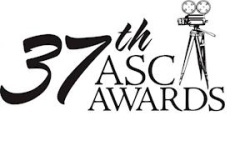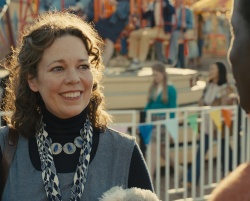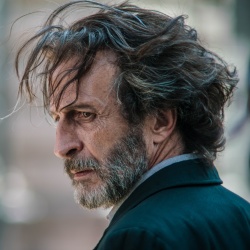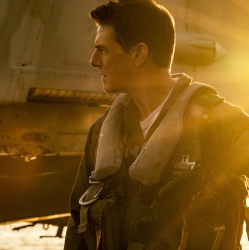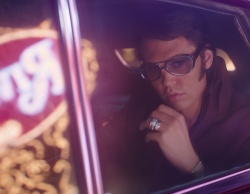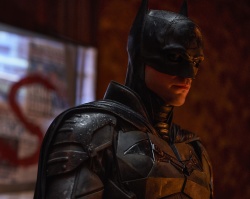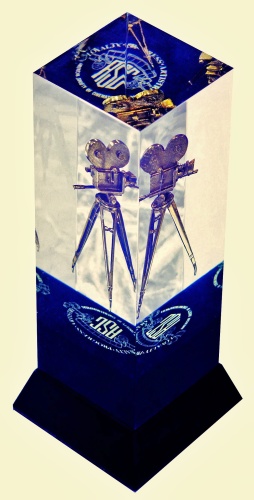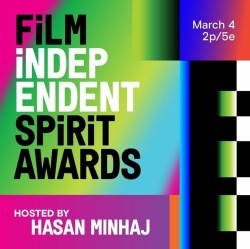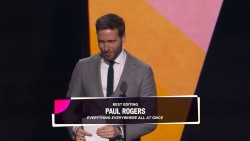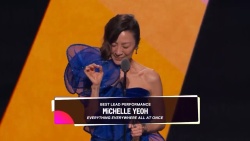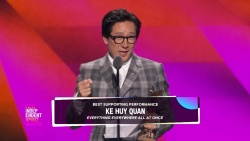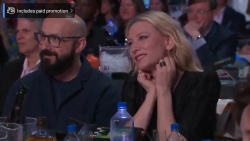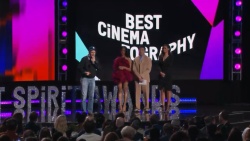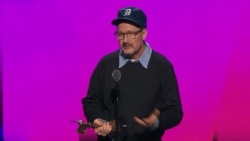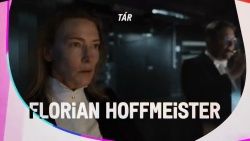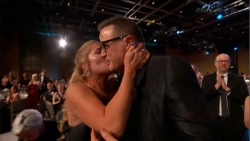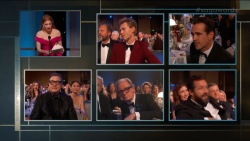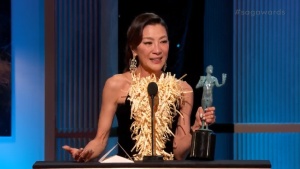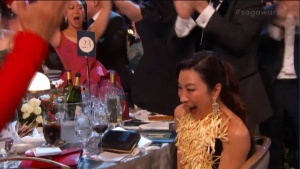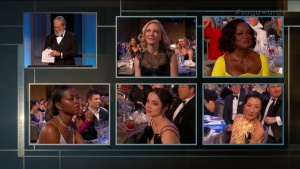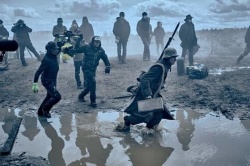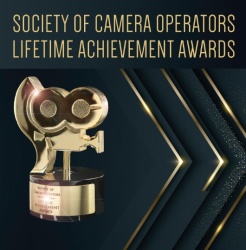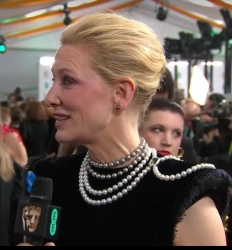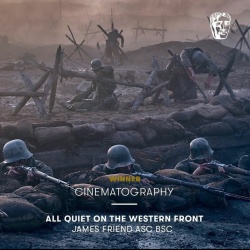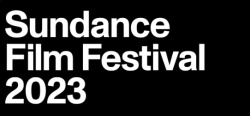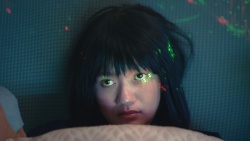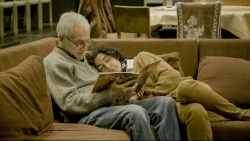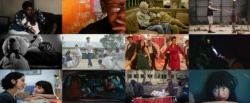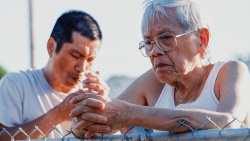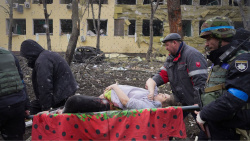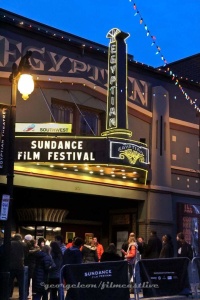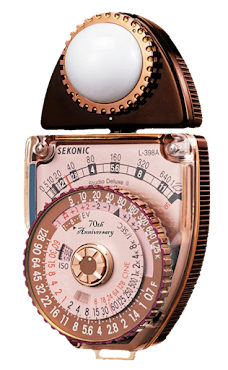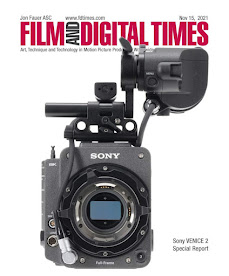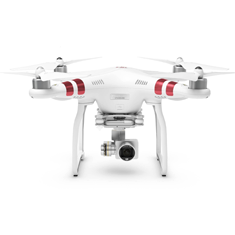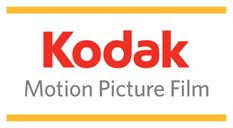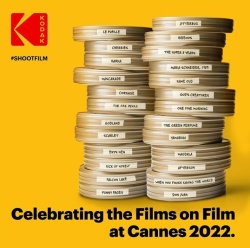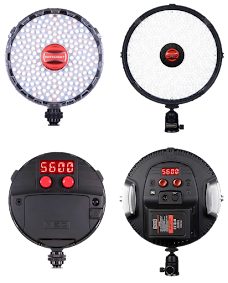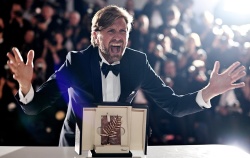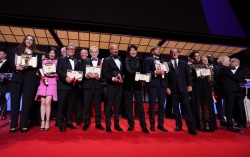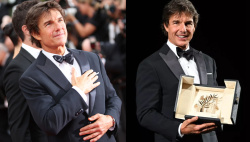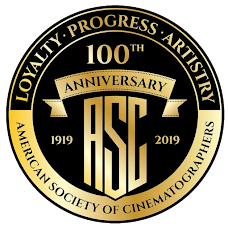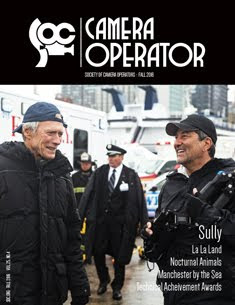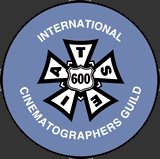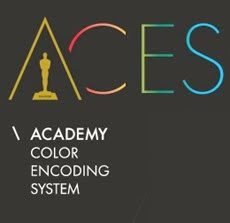Here is the coverage of a story by two different sources, which I decided to merge into one posting given both articles- a journalistic blog posting by David Heuring and a marketing video by Canon- are intrinsically inseparable to a cinematographer's discerning eye to better understand the production process involved in the making of the short film The Human Voice.
Lighting for a Legend — Rodrigo Prieto Shoots Sophia Loren Short in Rome
As originally published on September 4, 2013 in ASC Parallax View by David Heuring
with the exception of two still photos credited to other source.
Rodrigo on the set of THE HUMAN VOICE.
© Jon Fauer, ASC
Rodrigo Prieto, ASC, AMC recently finished a unique short film that stars Sophia Loren and was directed by Loren’s son, Edoardo Ponti. The title is The Human Voice, and the script is based on a one-person stage play by Jean Cocteau. The 25-minute film was filmed over the course of about two weeks, mostly on a soundstage in Rome, with some flashback scenes shot along the coast in Naples.
Rodrigo says that says that as a teenager, Loren was struck by another screen version of the story starring Anna Magnani, whose performance helped inspire Loren to eventually become an actress. She’d dreamed of taking on the role ever since. The Human Voice depicts a long, intermittent phone conversation between a woman and her lover, who is leaving her for another woman. At first, she tries to put a brave face on things. But eventually her emotions pour out. The male half of the doomed relationship is never seen by the audience.
Rodrigo and first AC Zoran Veselic at work.
©Jon Fauer, ASC
Rodrigo met Ponti on a panel at the Tribeca Film Festival, where they each had a short screen in the same program. Rodrigo’s short, which he directed and shot, was titled Likeness and starred Elle Fanning. Ponti’s film, Il turno do note lo fanno le stelle, starred Julian Sands and Nastassja Kinski. “Edoardo approached me after the event and told me about The Human Voice,” says Rodrigo. “I was immediately fascinated.”
Their earliest conversations about the look of the film were conducted via Skype, with Ponti in Rome and Rodrigo in Santa Fe, New Mexico, where he was finishing The Homesman for director/star Tommy Lee Jones. “Edoardo wanted it to feel romantic, but at the same time realistic,” says Rodrigo. “He didn’t want an overly dramatic image — he said the drama would be in the words and in the performance. I chose to use Cooke S4 lenses as I felt they have a pleasing quality that would work well for a monologue piece.”
Changes in the time of day offered Rodrigo a range of lighting opportunities.
©Jon Fauer, ASC
Ponti had done his previous short on the Canon C300, so he had a relationship with Canon. That led in part to the decision to shoot The Human Voice on a Canon C500 camera. During a conversation with Rodrigo, Canon’s Tim Smith mentioned that the C500, in addition to its ability to capture images in 4K 10-bit files, can shoot 2K files with 12-bit color depth. The camera incorporates an onboard Codex S Plus recorder that facilitates either format.
“In testing, I noticed that especially on skin tones and some fruit I placed on a bowl next to the stand-in, the subtlety of color was best captured in 2K 12-bit,” says Rodrigo. “For our purposes, the differences in resolution between 4K and 2K were negligible, but the proper rendering of the many colors in her face was essential.”
The opportunity to work with the legendary actress was intimidating. “It was an incredible privilege, honor and responsibility to photograph an icon of world cinema like Sophia,” he says. “It did scare me a little bit at first. She has been lit by the best photographers and cinematographers in the world. I know that she understands lighting, especially her own — she knows what looks good. I think that feeling of fear was actually positive in the end. I think it helped me find ways to lovingly photograph her while enhancing the dramatic curve of the piece.
“Edoardo was instrumental in easing these fears,” says Rodrigo. “He is a very generous director who likes to have a fun atmosphere, which is something I enjoy. I think I run a disciplined set, but I appreciate being able to laugh and joke a bit. Sets are tense enough already, with budgets and schedules causing stress. I think it’s important to feel relaxed and happy while you work.
Edoardo Ponti and Sofia Loren on the set
of the Human Voice © BestImage
“The other great privilege for me was witnessing the mother-son relationship, and how Sophia’s dream of playing this role was becoming a reality through her son,” says Rodrigo. “Seeing them on the set together, through these emotional moments, was very touching. Seeing them find the right performance and direction as a family was very beautiful and special.”
Prior to The Human Voice, Rodrigo shot two completely dissimilar projects, but he reprised the “mostly film-some digital” approach he used on Argo, which of course won Best Picture and two other Oscars this past February. For The Homesman, he shot Super 35 film format for 85 or 90% of the film, but used the Sony F55 in low light situations, including some scenes where he shot with just an oil lamps and candles for illumination. On The Wolf of Wall Street for Martin Scorsese, he shot with Hawk anamorphic lenses and some scenes with spherical Master Prime lenses — for the most part on film and sometimes on Alexa for low light and visual effects.
For the time being, Rodrigo is shooting commercials and enjoying some time close to home.
Canon Collaborations: The EOS C500 Configured by the Crew of Human Voice
A conversation between three talented filmmakers, as director Edoardo Ponti, Cinematographer Rodrigo Prieto, ASC, AMC, and First AC Zoran Veselic discuss how they configured a Cinema EOS C500 PL camera to shoot the intimate short film, Human Voice.
For more detailed technical information about The Human Voice, check out the Film & Digital Times coverage by Jon Fauer, ASC.



















































